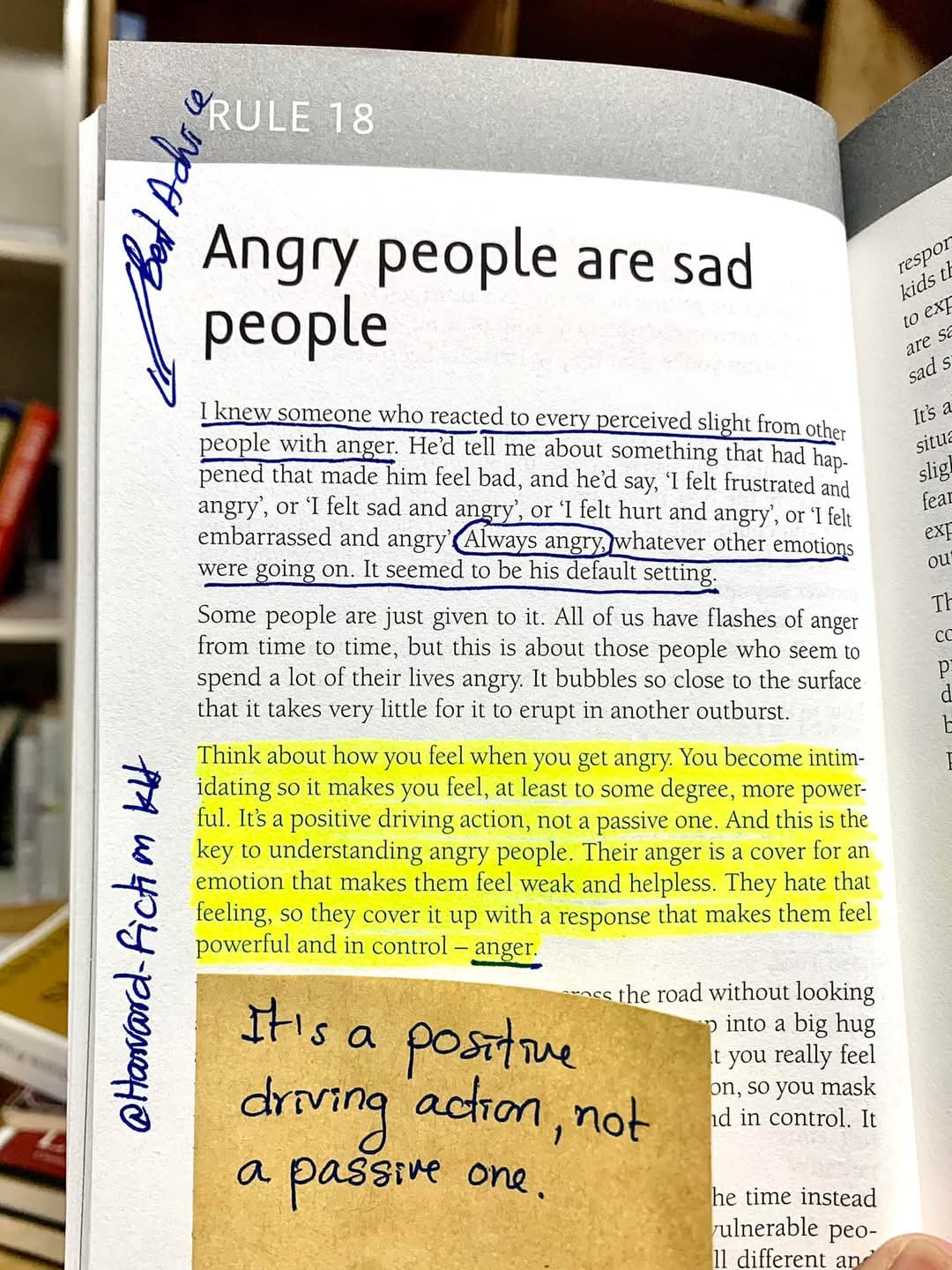I wasn’t looking for a revelation when I flipped through the pages of this book, The Subtle Art of Not Giving a F*ck by Mark Manson. I was just skimming, passing time, letting the words blur together as I half-read. And then, I found this passage—and it stopped me in my tracks.
“Think about how you feel when you get angry. You become intimidating so it makes you feel, at least to some degree, more powerful. It’s a positive driving action, not a passive one. And this is the key to understanding angry people. Their anger is a cover for an emotion that makes them feel weak and helpless. They hate that feeling, so they cover it up with a response that makes them feel powerful and in control—anger.”
I read it again. And again.
Because if I’m being honest, I’ve seen this play out—in myself, in others, in moments where frustration turned into sharp words, where disappointment morphed into defensiveness, where fear masked itself as fury. This passage put into words something I had always known but never quite articulated: anger is rarely just anger. It’s a cover. A shield. A tool people use when they don’t want to feel powerless.
The Default Setting: Why Some People Live in Anger
The passage also described something else that resonated deeply:
“I knew someone who reacted to every perceived slight from other people with anger. He’d tell me about something that had happened that made him feel bad, and he’d say, ‘I felt frustrated and angry,’ or ‘I felt sad and angry,’ or ‘I felt hurt and angry,’ or ‘I felt embarrassed and angry.’ Always angry, whatever other emotions were going on. It seemed to be his default setting.”
I thought about the people I’ve known—the ones who seem to carry anger like armor, who meet every inconvenience, every challenge, every hurt with the same response. Always angry.
But when you really listen to them, when you get past the edge in their voice, you start to hear the other emotions underneath. Frustration. Sadness. Embarrassment. Fear. The anger is just the mask. The protective layer they put on because feeling weak is unbearable.
Anger as a Driving Force—Not a Passive One
What struck me the most was the idea that anger is not a passive emotion—it’s an active one.
We often think of anger as a loss of control, but in reality, it’s a response designed to gain control. It’s a way of reclaiming power when we feel small. It makes sense. When people feel disrespected, they get angry. When they feel unseen, unheard, dismissed—they get angry. Why? Because anger demands attention.
And while anger can be destructive when left unchecked, the truth is, it can also be transformative. Some of the greatest movements in history—the fight for civil rights, social justice, equality—were fueled by righteous anger. The difference is in how that anger is used.
What Is Anger Covering Up?
This passage made me ask a hard question: When was the last time I was angry? And what was it actually about?
Because if we’re honest with ourselves, anger is rarely just about the thing that triggered it at the moment. It’s about everything underneath—unspoken words, past wounds, unmet expectations, moments where we felt powerless but didn’t know how to say it.
So we lash out instead. We get defensive. We argue. We push people away. Not because we want to—but because it feels safer than saying “I’m hurt.”
Breaking the Cycle
If you see yourself in this—if you recognize the way anger has become your default setting—there’s a way to break the cycle.
- Pause and ask: What else am I feeling?
Is it disappointment? Fear? A feeling of rejection? Identifying the root emotion helps you address the real issue. - Choose how to express it.
Instead of letting anger take over, try saying what you’re actually feeling. “I felt dismissed when you said that,” is more constructive than snapping “You never listen to me.” - Channel the anger into action.
Anger itself isn’t the problem—it’s what you do with it. If something makes you angry, use that energy to set boundaries, advocate for yourself, or work toward change. - Recognize when anger is a cover-up.
It’s okay to be mad. But ask yourself: Am I really angry, or am I just scared to feel vulnerable?
Final Thoughts: What This Passage Taught Me
I didn’t expect to find something that resonated so deeply that it made me stop reading and just sit with my thoughts. But this passage? It changed the way I see anger.
Anger is not just an explosion of emotion. It’s a tool—one that can be destructive or powerful, depending on how it’s used.
It can be a mask, hiding the emotions we don’t want to face.
Or it can be a catalyst for understanding, for action, for change.
The next time I get angry, I’m going to pause and ask myself: What is this really about? Because if anger is my way of reclaiming power, I want to make sure I’m using it in a way that serves me—not controls me.
And maybe, just maybe, that’s the real lesson.


Leave a Reply
You must be logged in to post a comment.